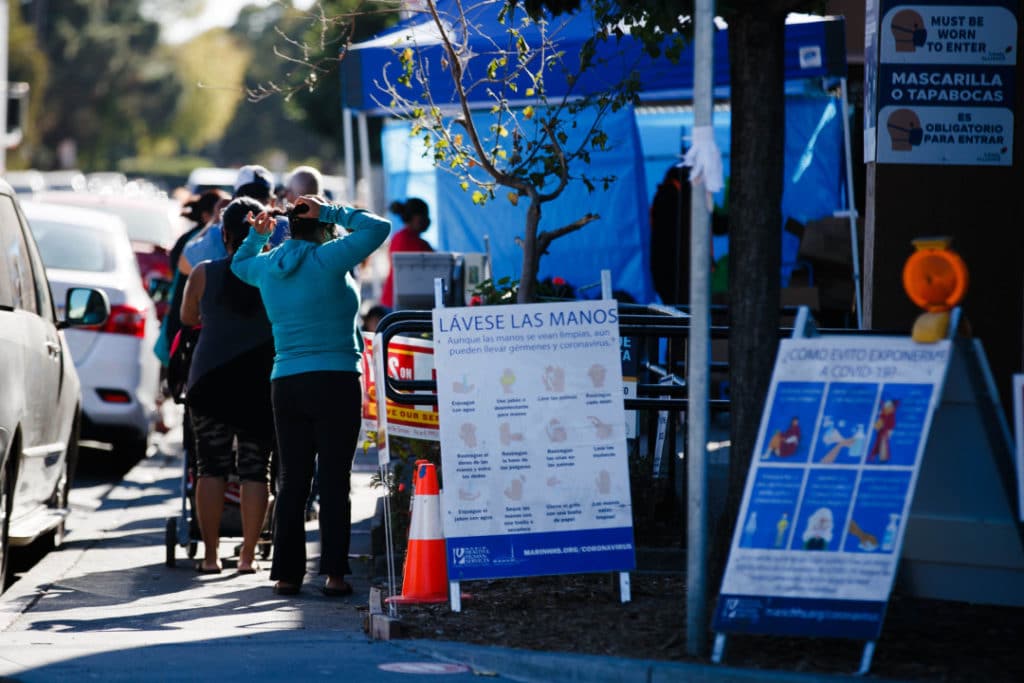Marin’s intensive effort drove down a COVID surge among Latino residents
March 14, 2021
MarinIJ article by: David Debolt

SAN RAFAEL — Before California’s summer surge took hold, Marin County offered one of the starkest illustrations of the virus’s disparate impact: During the first week of June, just as reopening had begun, Latino residents accounted for 90 percent of all new cases in the county despite making up just 16 percent of the population.
But Marin also stands out for the steps it took to address COVID-19’s spread in the predominantly Latino Canal District of San Rafael, one of just two ethnically diverse census tracts in the county.
After flooding the neighborhood with testing, training local Spanish speakers as contact tracers and covering the streets with signs and materials in Spanish about how to protect against the deadly virus, Marin County saw the number of new coronavirus cases among Latinos drop to a little over 30 percent by late October.
Omar Carrera, who has spent years working in Canal, remembers the first weeks of the pandemic. At the time, he wasn’t optimistic about the county’s approach.
“It lacked understanding of how deep the poverty is in this community,” said Carrera, executive director of the nonprofit Canal Alliance, which has served the neighborhood for nearly three decades and provided more than $1 million in coronavirus aid. “Anything they created wouldn’t translate to success immediately. It required a lot of troubleshooting and fixing.”
The driver of the outbreak in the neighborhood dotted with palm trees, auto body shops and low-slung apartment complexes was clear, he said: Essential workers were contracting COVID-19 on the job and spreading the virus back home in Canal, where 81 percent of residents are Latino, and multiple families often live together in one apartment.
“It was a perfect environment for the virus to grow fast,” said Carrera.
By July, the county had launched what came to be known as the Canal Outbreak Response plan, working with the city of San Rafael, the Canal Alliance, Marin Community Clinics, Kaiser and others.
Within three weeks, a permanent testing site at Marin Community Clinics, in a Canal shopping center, had opened. About 600 “Why I Mask” posters featuring local residents were plastered throughout the streets. Another pop-up testing site was set up at Canal Alliance.
UCSF was brought in to train five Spanish-speaking contact tracers. That helped the county meet its goal of calling 80% of residents who tested positive within 48 hours of their result.
Volunteers with Canal Alliance said they also went door to door, encouraging residents not be afraid of being tested and telling them about available resources.
Jorge and Vicky Tenorio, parents of two daughters and a son, said the Canal Alliance made the difference for them when Vicky, who works as a babysitter for a family in San Anselmo, tested positive for the virus earlier this year. The group helped with groceries and rent while Vicky quarantined in a hotel.
Read the full article on the MarinIJ website: